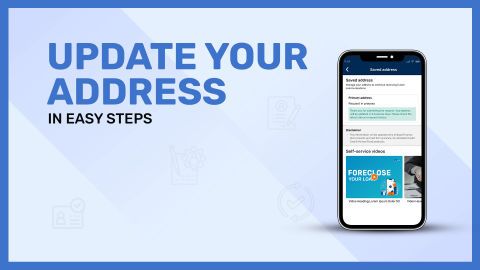Why choose digital payment modes for car loans?
With the growing emphasis on digital transactions, opting for digital payment modes for car loan repayment offers numerous advantages. Traditional methods require physical visits, paperwork, and time-consuming processing, whereas digital payments provide a faster, safer, and more efficient alternative. Banks and financial institutions encourage borrowers to use digital channels due to their reliability, real-time processing, and enhanced security measures.Digital payments ensure that loan EMIs are paid on time, reducing the risk of penalties and improving financial discipline. Auto-debit features prevent missed payments, and mobile banking apps offer real-time updates on loan status. The ease of setting up standing instructions eliminates manual intervention, saving time and effort. Moreover, digital payment modes support eco-friendly banking by minimizing paperwork and reducing the dependency on physical transactions.
Security is a major concern when it comes to financial transactions. Digital payment modes incorporate advanced encryption, OTP authentication, and fraud detection mechanisms, ensuring that transactions are secure and transparent. Borrowers also receive instant payment confirmations, reducing uncertainty and the need for follow-ups.
Another key advantage is accessibility. With digital payments, borrowers can make transactions from anywhere, anytime, without the constraints of banking hours. Online banking portals, UPI applications, and mobile wallets simplify the process, providing flexibility and convenience.
With digital transactions gaining widespread acceptance, financial institutions often offer discounts and incentives for borrowers using online payment methods. Some banks also provide cashback offers or reduced processing fees for digital transactions, making them a cost-effective choice. By choosing digital payment modes, borrowers benefit from a seamless and efficient loan repayment process while contributing to the modernization of financial transactions.
Benefits of digital payments for car loan repayment
Convenience: Digital payments eliminate the need for physical visits to the bank, allowing borrowers to make payments from the comfort of their homes using net banking, UPI, or mobile wallets.Time-saving: With real-time processing, digital payments ensure that transactions are completed instantly, reducing delays and manual intervention.
Auto-debit facility: Setting up auto-debit instructions ensures timely EMI payments, avoiding late fees and maintaining a good credit score.
Security and encryption: Digital payments use advanced security measures, including OTP verification, biometric authentication, and fraud detection, ensuring safe transactions.
Instant payment confirmation: Borrowers receive immediate notifications and transaction receipts, reducing ambiguity and the need for follow-ups with banks.
Flexibility: Online banking and mobile payment apps allow borrowers to make payments anytime, eliminating dependency on banking hours and public holidays.
Multiple payment options: Borrowers can choose from a variety of digital payment modes such as UPI, mobile banking, net banking, credit or debit cards, and digital wallets, ensuring ease of access.
Eco-friendly transactions: Digital payments reduce paperwork and the need for cheques or demand drafts, contributing to environmental sustainability.
Improved financial discipline: Scheduled payments through digital methods help borrowers stay on track with their repayment schedule, reducing the risk of missed payments.
Access to loan account details: Borrowers can track their EMI payments, loan balance, and due dates through banking apps and online portals, enhancing financial planning.
Reduced processing fees: Some banks and NBFCs offer lower transaction fees for digital payments compared to cheque-based payments, making them a cost-effective alternative.
Promotional offers: Many financial institutions provide cashback or reward points for using digital payment methods, offering additional financial benefits.
Seamless integration: Digital payment platforms are integrated with banking services, enabling a unified experience where borrowers can access loan details and make payments in one place.
Easy record-keeping: Digital transactions generate an electronic trail, helping borrowers maintain proper financial records for future reference and tax purposes.
Better credit score management: Timely payments through digital modes ensure a positive credit history, enhancing future loan eligibility and interest rates.
With financial institutions actively promoting digital transactions, adopting these payment methods for car loan repayment ensures a hassle-free and secure experience. By leveraging digital payment options, borrowers can enjoy seamless transactions, timely payments, and a range of financial benefits while staying ahead in an increasingly digital world.
Top digital payment methods for car loan
Net banking: Secure and quick payments through a bank’s online portal with immediate transaction confirmation.Mobile banking apps: Banks’ mobile applications allow easy EMI payments with real-time tracking.
UPI (Unified Payments Interface): Instant, 24/7 payments with seamless integration across banking platforms.
Auto-debit facility: Standing instructions on bank accounts ensure automatic EMI deductions.
Debit and credit cards: Convenient one-time or recurring payments with transaction security.
Digital wallets: Secure payments using platforms like Paytm, Google Pay, and PhonePe.
NEFT/RTGS/IMPS: Reliable bank transfers with varying processing times based on transaction type.
How to make digital payments for car loan repayments
Login to net banking: Access your bank’s net banking portal, navigate to the loan section, and select EMI payment.Use mobile banking apps: Open your bank’s mobile application, go to the loan section, and make payments via linked accounts.
Set up auto-debit: Authorize your bank to auto-debit EMIs from your account on a scheduled date to avoid missed payments.
Use UPI payments: Open a UPI app like Google Pay or PhonePe, scan the lender’s QR code or enter UPI details, and complete the payment instantly.
Pay via debit or credit card: Enter your card details on the lender’s portal and authorize payment securely.
NEFT/RTGS transfers: Add the lender’s account as a beneficiary in your net banking and transfer funds securely.
IMPS for instant transfers: If immediate payment is required, use IMPS for real-time transactions.
Security features of digital car loan payments
OTP Authentication: One-time passwords (OTPs) are sent to registered mobile numbers to verify transactions and prevent unauthorized payments.Biometric verification: Fingerprint or facial recognition is used in mobile banking apps to enhance security and prevent fraudulent access.
Data encryption: Advanced encryption protocols protect sensitive financial information from cyber threats during online transactions.
Transaction alerts: Instant SMS and email notifications provide real-time updates on successful or failed transactions, reducing fraud risks.
Two-factor authentication (2FA): Requires both a password and an additional security code (OTP, biometric, or PIN) for extra protection.
Secure payment gateways: Banks and financial institutions use PCI DSS-compliant payment gateways to ensure safe transactions.
Fraud detection mechanisms: AI-powered fraud detection systems monitor transactions for suspicious activities and block unauthorized payments.
End-to-end encryption: Ensures data transmission between the user and the bank remains secure and protected from breaches.
Common challenges in using digital payments for car loans
Technical glitches: Server downtime or banking system failures may lead to unsuccessful transactions.Cybersecurity risks: Fraudulent activities like phishing, hacking, or malware attacks pose risks to online transactions.
Incorrect loan details: Entering the wrong car loan account number may lead to payment failures or funds being credited to the wrong account.
Limited internet access: Poor network connectivity can delay or prevent digital payments in remote areas.
Transaction delays: Some payment methods, like NEFT or RTGS, may take longer to process compared to instant payment options.
Banking restrictions: Daily transaction limits on net banking, UPI, or credit/debit cards may cause inconvenience in high-value payments.
Auto-debit failures: Insufficient funds in the account may lead to auto-debit failures, resulting in penalties or late fees.
Lack of awareness: Some borrowers may find digital payment processes confusing, leading to errors or delays.
Unauthorised transactions: Without proper security measures, there is a risk of unauthorized payments due to compromised credentials.
With financial institutions actively promoting digital transactions, adopting these payment methods for car loan repayment ensures a hassle-free and secure experience. By leveraging digital payment options, borrowers can enjoy seamless transactions, timely payments, and a range of financial benefits while staying ahead in an increasingly digital world. For those looking to make a part payment for car loan, digital platforms offer quick and efficient processing.




